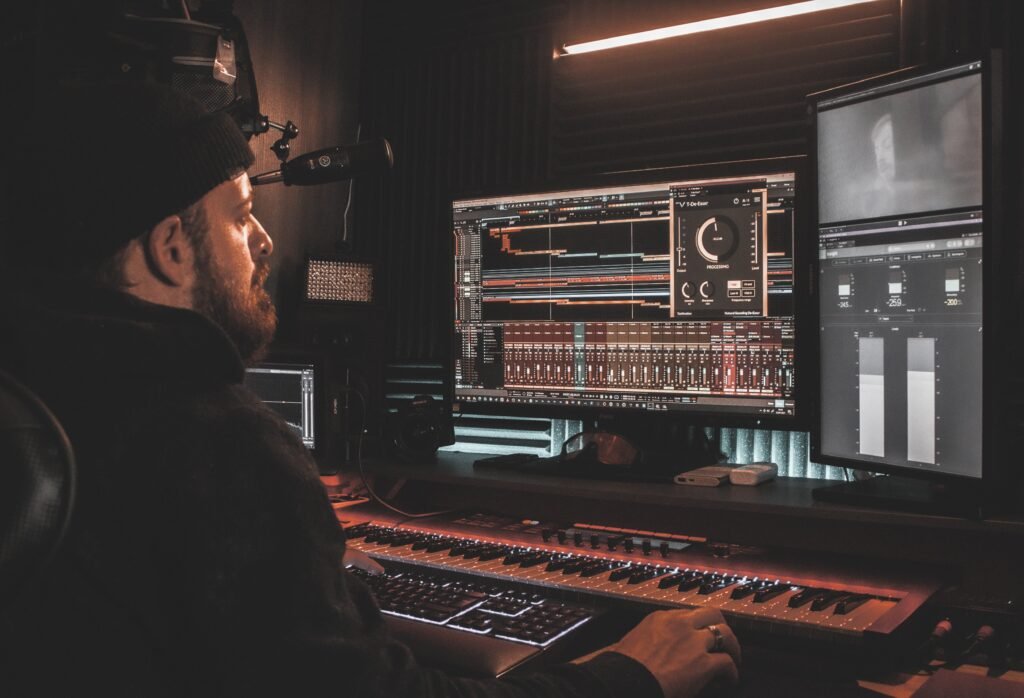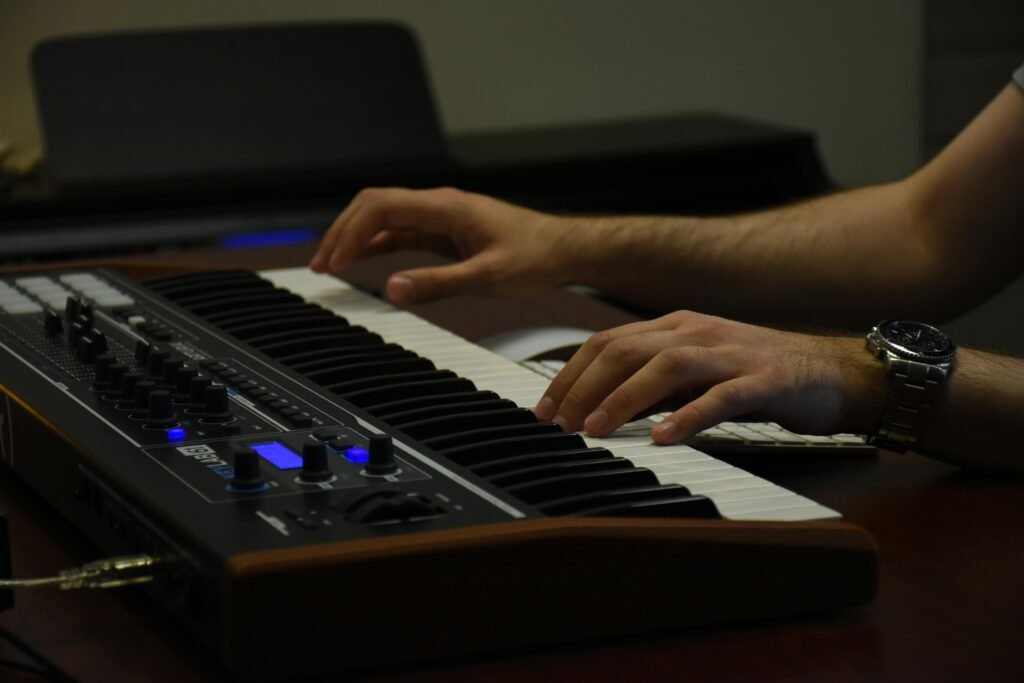As a professional composer, crafting cinematic soundscapes is a powerful way to immerse listeners in a rich and evocative sonic environment. Cinematic soundscapes go beyond traditional melody and harmony, incorporating elements of sound design, texture, and spatialization to create immersive auditory experiences. In this guide, we’ll explore techniques that composers can use to add depth and atmosphere to their music, transforming ordinary compositions into cinematic journeys that captivate the imagination.

Understanding Cinematic Soundscapes
1. Sound Design:
Sound design is the art of creating and manipulating sounds to evoke specific emotions and imagery. In cinematic soundscapes, sound design plays a crucial role in shaping the mood and atmosphere of a composition. Composers use a variety of techniques, such as layering, processing, and synthesis, to craft unique and evocative sonic textures that transport listeners to otherworldly realms.
2. Ambience and Texture:
Ambience and texture are essential elements of cinematic soundscapes, providing depth and dimension to the sonic landscape. Composers incorporate ambient sounds, such as environmental recordings and atmospheric effects, to create immersive sonic environments that envelop listeners in a sense of space and atmosphere. Textural elements, such as drones, pads, and evolving soundscapes, add richness and complexity to the sonic tapestry, enhancing the emotional impact of the music.
3. Spatialization and Movement:
Spatialization and movement techniques are used to create a sense of spatial depth and dynamic motion in cinematic soundscapes. Composers manipulate stereo imaging, panning, and spatial effects to position sounds within the stereo field, simulating the perception of distance and directionality. By incorporating subtle movements and transitions, composers add a sense of fluidity and progression to the music, drawing listeners deeper into the sonic narrative.
4. Emotional Resonance:
At its core, cinematic soundscapes are designed to evoke emotional responses and resonate with listeners on a profound level. Composers infuse their music with elements of tension, release, mystery, and wonder, guiding listeners through a transformative auditory experience. By tapping into the power of emotion, composers create cinematic soundscapes that leave a lasting impression and linger in the mind long after the music has ended.
Techniques for Crafting Cinematic Soundscapes
1. Layering and Texturing:
Layering multiple sound sources and textures is a fundamental technique for crafting cinematic soundscapes. Composers combine a diverse range of sounds, including instruments, field recordings, and synthesized elements, to create rich and immersive sonic environments. Experiment with layering different sounds and textures, adjusting levels, EQ, and effects to achieve the desired sonic balance and depth.

2. Ambient Effects and Foley:
Ambient effects and foley sounds add realism and depth to cinematic soundscapes, enhancing the sense of immersion and believability. Composers incorporate environmental sounds, such as wind, water, and footsteps, to create a sense of place and context within the music. Foley effects, such as rustling leaves, creaking doors, and distant voices, add subtle details and nuances that enrich the sonic experience.
3. Dynamic Processing and Automation:
Dynamic processing and automation techniques are used to shape the evolution and progression of cinematic soundscapes over time. Composers use dynamic range compression, EQ, and reverb to sculpt the sonic characteristics of individual elements and layers. Automation allows composers to modulate parameters such as volume, panning, and effect parameters, creating dynamic shifts and transitions that enhance the narrative flow of the music.
4. Spatial Effects and Movement:
Spatial effects and movement techniques are employed to create a sense of spatial depth and motion within cinematic soundscapes. Composers use techniques such as reverb, delay, and spatial modulation to simulate the acoustic properties of different environments and create spatial illusions. By incorporating subtle movements and transitions, composers add a sense of dynamism and progression to the music, enhancing its cinematic impact.
Conclusion
Crafting cinematic soundscapes is a dynamic and immersive process that allows composers to push the boundaries of creativity and storytelling. By understanding the principles of sound design, ambience, spatialization, and emotion, composers can create cinematic soundscapes that transport listeners to imaginary worlds and evoke powerful emotional responses. So, embrace the techniques outlined in this guide, experiment with different sounds and textures, and unleash your creativity to craft cinematic soundscapes that captivate, inspire, and transport listeners on epic auditory journeys.